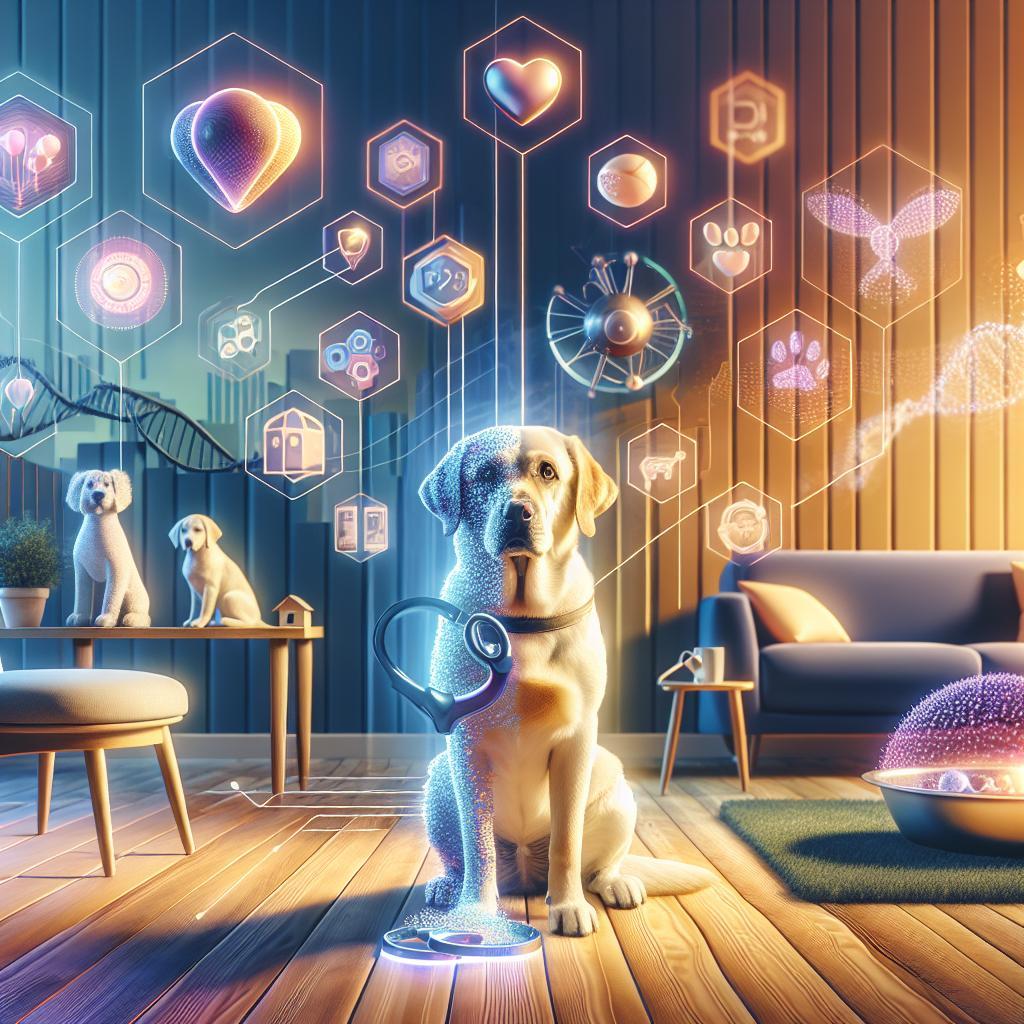Dogs are often affectionately referred to as “man’s best friend,” and for good reason. Their loyalty, companionship, and playful nature enrich our lives in countless ways. However, like any relationship, living harmoniously with our canine companions requires understanding and communication. Enter positive reinforcement techniques—a proven, effective approach that fosters good behavior while deepening the bond between you and your furry friend. This article delves into the science and art of positive reinforcement, offering practical insights and strategies to transform challenges into opportunities for learning and growth. Whether you’re a seasoned dog owner or a new puppy parent, these techniques can help unlock the potential within your pet, making everyday experiences more enjoyable for you both. Let’s explore how celebrating good behavior can lead to a happier, healthier relationship with your dog.
Understanding Positive Reinforcement and Its Impact on Canine Behavior
Positive reinforcement is a powerful tool in shaping canine behavior, utilizing the principle of rewarding desired actions to encourage their repetition. This method hinges on the idea that when a behavior is followed by a pleasant consequence, dogs are more likely to engage in that behavior again. For instance, when a dog sits on command and receives a treat or affection, it learns to associate sitting with positive outcomes. Some of the benefits of employing positive reinforcement techniques include:
- Enhanced bond: Reward-based training fosters a trusting relationship between owner and dog.
- Reduced anxiety: Positive methods can lower stress in dogs, making them more open to learning.
- Lasting results: Behaviors learned through positive reinforcement are often retained longer than those learned through punishment.
Implementing these techniques effectively requires consistency and timing. Reinforcements should be given immediately after the desired behavior to create a clear connection. Additionally, varying the rewards can keep the training engaging for your dog. Consider using a mix of treats, toys, and praise to maintain motivation. Here’s a simple overview of different types of rewards:
| Type of Reward | Examples |
|---|---|
| Treats | Small pieces of kibble, dog biscuits, or training treats |
| Toys | Favorite squeaky toy or a tug rope |
| Praise | Verbal affirmations like “good boy” or “well done” |

Essential Tools for Effective Positive Reinforcement Training
To foster an environment that promotes positive reinforcement, it’s crucial to equip yourself with the right tools. One of the most effective implements in your training toolkit is high-value treats. These can range from soft, smelly morsels to small pieces of cooked chicken or cheese, ensuring they capture your dog’s attention. Additionally, consider using clickers or marker words like “yes!” to precisely indicate to your dog when they have performed the desired behavior. The auditory cue helps bridge the gap between the action and the reward, making the learning process more efficient.
Another essential element is a comfortable harness or leash that allows for positive interactions during outdoor training sessions. Using a training pouch can also enhance your training experience by keeping rewards easily accessible while allowing you to maintain focus on your dog. A well-structured training schedule is vital; consider creating a simple table to outline training sessions, goals, and progress. This organization not only helps keep you on track but also visibly showcases the improvements your dog makes over time.
| Training Element | Purpose | Benefits |
|---|---|---|
| High-Value Treats | Motivation | Engagement & Focus |
| Clicker/Marker | Communication | Clear Guidance |
| Comfortable Harness/Leash | Control | Positive Walks |
| Training Pouch | Accessibility | Easier Sessions |

Crafting a Reward System Tailored to Your Dogs Personality
Understanding your dog’s unique personality is essential when creating an effective reward system. Dogs, much like humans, come with their own quirks and preferences. Some dogs respond well to verbal praise, while others may thrive on physical affection or playtime. To maximize the impact of your positive reinforcement efforts, consider the following strategies:
- Playtime Rewards: For energetic pups, incorporate play sessions with their favorite toy as a reward for good behavior.
- Treat Varieties: Identify a selection of treats your dog particularly enjoys; rotating these can keep their interest piqued.
- Affectionate Cues: For more sensitive dogs, a gentle pet or cuddle might be the most motivating reward.
It’s also beneficial to establish a clear system that corresponds with your dog’s actions. Consider using a simple chart to track behaviors and rewards, allowing you to visually connect the dots. A basic layout may look like this:
| Behavior | Reward |
|---|---|
| Sit | 2 Treats & Praise |
| Stay | Playtime with Ball |
| Come | Cuddle & Belly Rubs |
By pairing each desired behavior with a carefully chosen reward that resonates with your dog’s personality, you foster a positive learning environment. Tailoring your approach not only enhances your dog’s obedience skills but also strengthens your bond through understanding and mutual respect.

Building Lasting Habits Through Consistent Positive Reinforcement Techniques
Implementing consistent positive reinforcement techniques is essential for nurturing a well-behaved dog. Each time your dog exhibits the desired behavior, immediate acknowledgment through praise, treats, or playtime can significantly strengthen the bond between you and your pet. This immediate feedback encourages your dog to repeat the behavior, as they learn to associate good deeds with positive outcomes. To create a robust framework for this process, consider incorporating the following principles:
- Immediate Reward: Deliver rewards instantly after the desired behavior.
- Varied Reinforcements: Use a combination of treats, praise, and toys to keep your dog engaged.
- Consistency is Key: Apply the same rules and rewards across all family members to avoid confusion.
Another effective method involves gradually increasing the criteria for reinforcement, which heightens your dog’s engagement and makes the training process more stimulating. Start by rewarding simple tasks and gradually introduce new, more complex commands. This technique encourages mental stimulation and keeps your dog motivated. Below is a simple guideline to illustrate how to structure this process:
| Behavior | Initial Reward | Progression |
|---|---|---|
| Sit | Small treat | Introduce “Stay” command before rewarding. |
| Come | Verbal praise | Add distance before issuing the command. |
| Heel | Favorite toy | Increase duration and distractions. |
Q&A
Q&A: Positive Reinforcement Techniques for Better Dog Behavior
Q1: What is positive reinforcement, and why is it effective for dog training?
A1: Positive reinforcement involves rewarding a dog for displaying desirable behaviors, which encourages the repetition of those behaviors. This technique works on the principle that animals, including dogs, are more likely to repeat actions that lead to pleasant outcomes. By fostering a bond of trust and understanding, positive reinforcement nurtures a happier and more obedient pup.
Q2: Can you provide some examples of positive reinforcement in action?
A2: Certainly! Here are a few common examples:
- Treats: Offering a small, tasty treat immediately after your dog sits on command reinforces that behavior.
- Praise: Enthusiastic verbal praise, like “Good boy!” or “Well done!” can boost your dog’s confidence and encourage him to repeat the action.
- Playtime: If your pooch performs a trick correctly, rewarding them with a fun game of fetch can strengthen that behavior while also enhancing your bond.
Q3: Are there any specific techniques within positive reinforcement that I should know about?
A3: Yes! Here are a few notable techniques:
- Clicker Training: Using a clicker as a marker for good behavior helps pinpoint the exact moment a dog does something right, making it easier for them to learn.
- Variable Reward Schedule: Sometimes offering rewards randomly rather than every time can increase motivation and excitement in your dog to perform.
- Luring: Using a treat to guide your dog into a desired position or behavior can effectively teach new commands.
Q4: How do I know what type of reward to use?
A4: Every dog is unique, so it’s important to discover what motivates your furry friend. Some dogs are food-driven, while others may respond better to toys or praise. Experiment with various rewards to see which your dog reacts to most favorably, and tailor your training accordingly.
Q5: What common mistakes should I avoid when using positive reinforcement?
A5: Some common pitfalls to watch out for include:
- Inconsistency: Always reinforce the desired behavior promptly; failing to do so can confuse your dog and diminish the effectiveness of your training.
- Over-reliance on treats: While treats are great motivators, using them too frequently can lead to weight gain and dependency. Balance treat rewards with verbal praise and play.
- Punishment: Avoid using negative reinforcement or punishment, as it can damage the trust between you and your dog. Focus on what your dog does right instead of what they do wrong.
Q6: How long does it take to see results with positive reinforcement training?
A6: The timeline can vary based on the individual dog, their temperament, and the behavior being targeted. Some dogs may grasp commands within a few sessions, while others may require weeks of consistent practice. Patience and persistence are key; celebrate small victories and enjoy the journey of learning together!
Q7: What should I do if my dog isn’t responding to positive reinforcement?
A7: If you find that your dog isn’t responding, consider the following:
- Reevaluate Rewards: Ensure that the rewards you’re using are truly motivating for your dog.
- Check Your Timing: Ensure you’re delivering rewards immediately after the desired behavior.
- Seek Professional Help: If challenges persist, consulting with a dog trainer or behaviorist can provide tailored techniques and strategies to improve training outcomes.
Incorporating positive reinforcement into your dog training can lead to a stronger bond and happier, well-behaved dog. Remember, patience and understanding are the cornerstones of effective training!
Key Takeaways
As we conclude our exploration of positive reinforcement techniques for fostering better dog behavior, it becomes clear that the journey to a harmonious relationship with our furry companions is both rewarding and essential. By understanding and implementing these methods, we not only enhance our dogs’ skills and manners but also strengthen the bond between human and pet. Remember, patience and consistency are key, and every small victory is a step towards improvement. As we continue to learn and grow alongside our canine friends, let us embrace the power of positivity and celebrate the joyful moments that define our shared adventure. Here’s to many tail wags, playful barks, and the profound connection that brings us closer to the dogs we cherish. Happy training!

